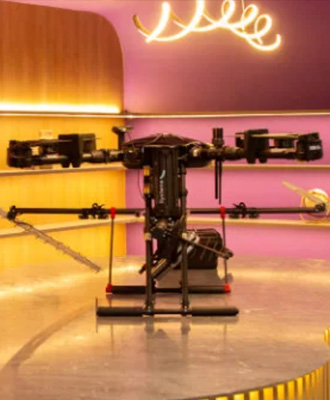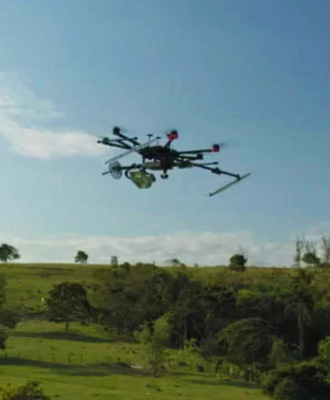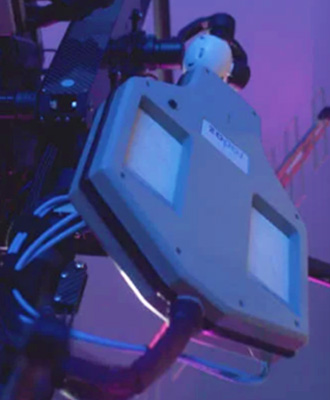Below Ground Inspection
Discover what’s hidden below the surface with our advanced drone inspections—featuring the world’s most compact 3-band radar for precise, efficient underground and vegetation analysis.
Remote sensing radar inspections using multi-rotors
AD provides below-ground inspections using the RD350 payload—a three-band radar system offering C, L, and P band operation with advanced data fusion capabilities. It enables cross-track interferometry in both the C and P bands simultaneously, along with polarimetric L-band analysis. The RD350 is specifically designed for integration with the AD Endure drone.
The system is capable of penetrating the ground—with or without forest cover, vegetation, or soil. Depending on the mode of operation, it can reach depths of up to 50 meters underground.
Below ground analysis with high efficacy
The system can cover up to 500 hectares per day in linear mode and up to 50 hectares per day in helical mode. Once data is collected through a USB stick on the GNSS ground station, the data is then processed on a laptop.
Combined, the radar can measure the volume of vegetation and the top layer of subsoil, penetrates the ground with or without forest, and penetrates vegetation and soil. Ideal for mining operation, landmine detection, vegetation analysis, soil analysis, underground machinery detection, underground gas tube detection, and other applications.
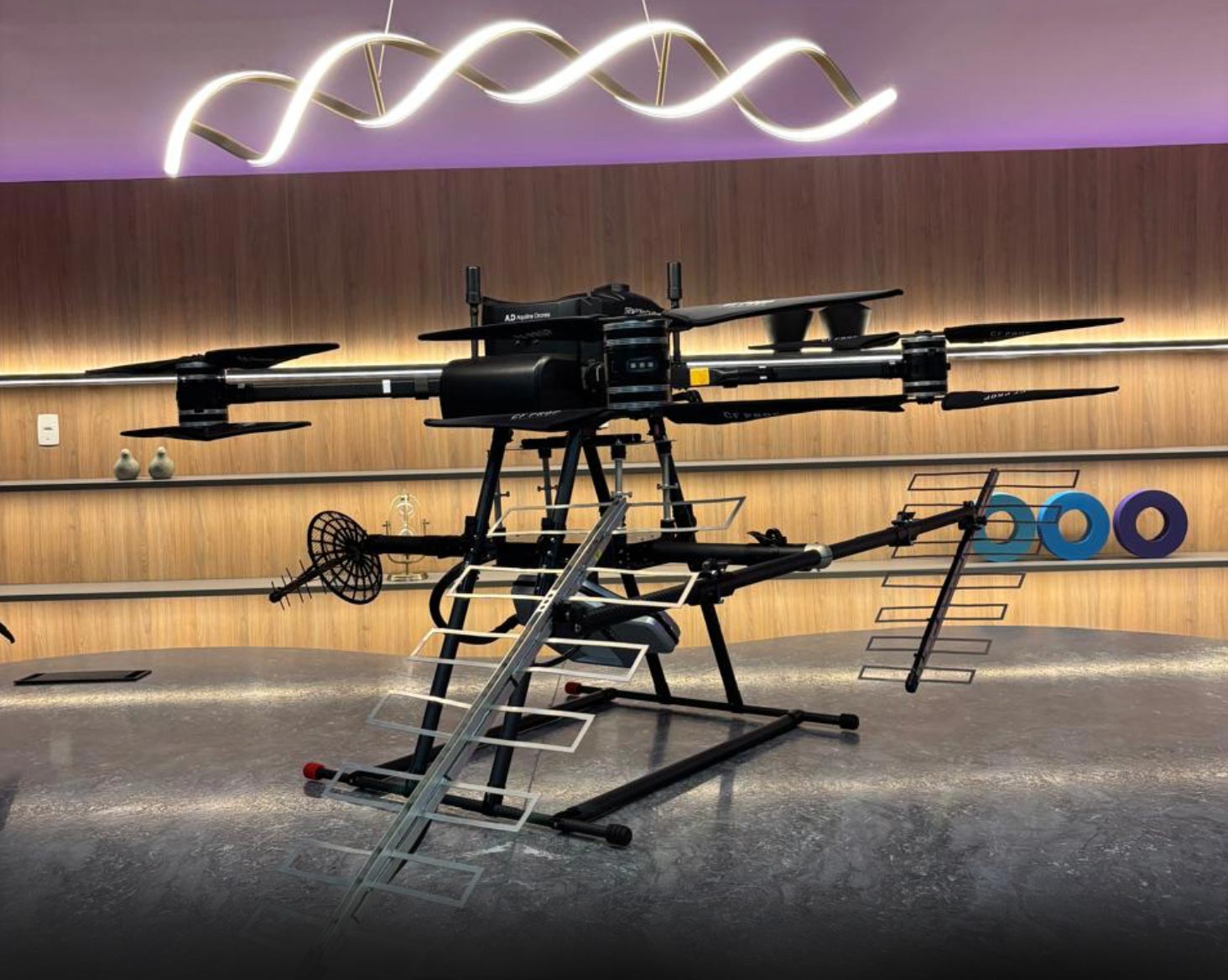
Delivering below ground inspection data
The drone flies over the desired area and can cover up to 500 hectares per day in linear flight mode and up to 50 hectares per day in helical flight mode. After the flight, the data on the USB sticks is collected from the GNSS ground station and radar on the drone and passed to the laptop where it will be processed. Once the processing is completed, a detailed report is generated.
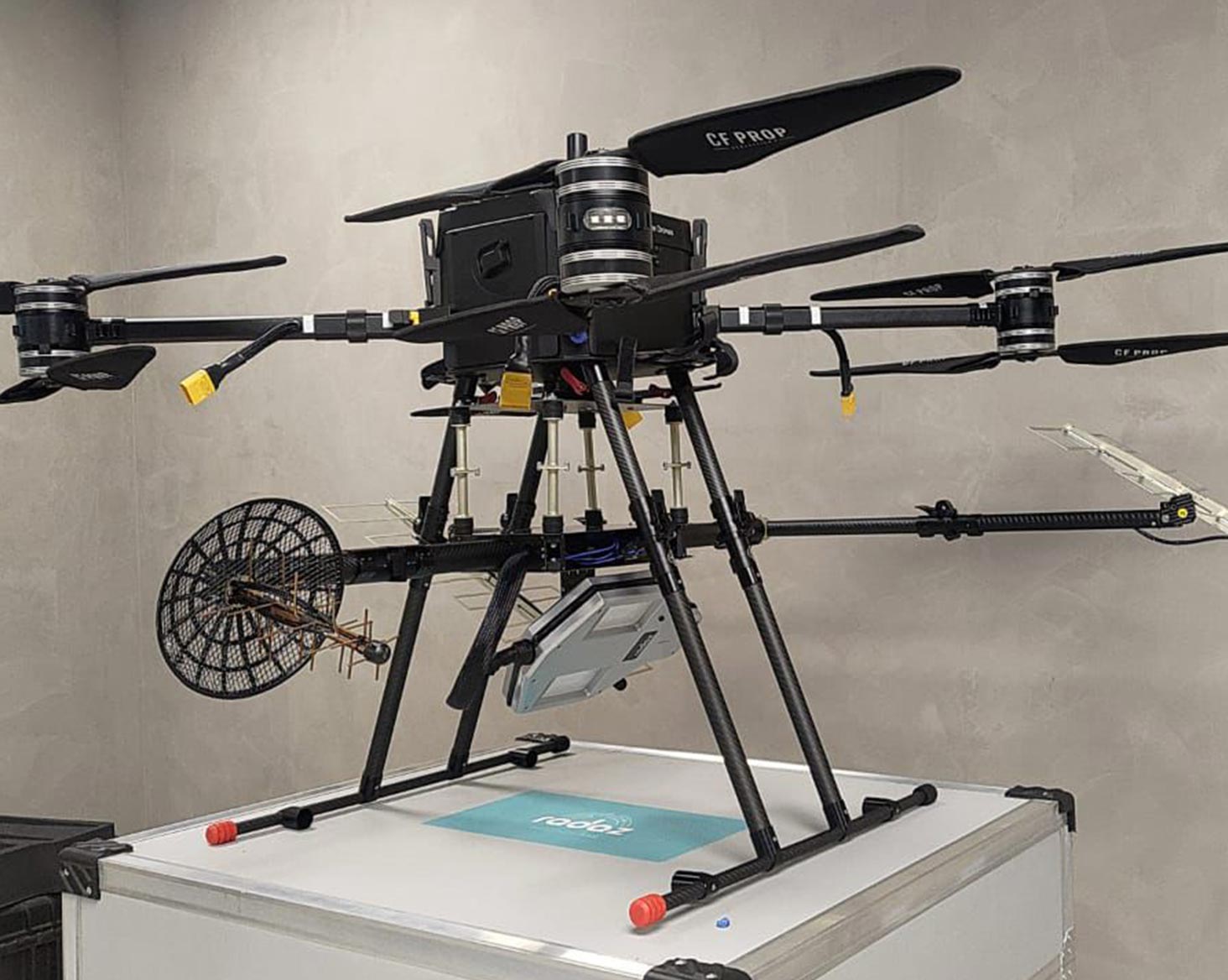
Key benefits
Key benefits include the ability to penetrate vegetation and below-ground surfaces, making it highly effective in diverse environments. The system operates independently of sunlight and cloud cover, ensuring consistent performance in all weather conditions. It features the world’s only three-band on-board radar capable of enabling multiple types of analysis on drones under 55 lbs. Additionally, the system offers automatic data processing, streamlining the workflow from data collection to actionable insights.
Integrated drone-radar system for deep terrain and vegetation analysis
The drone serves as the transport platform for the radar, allowing it to fly over and scan the desired area. The only current limitation is that the drone must support a payload of at least 13 pounds, which is the weight of the radar system and its antennas. We have already integrated the radar and antennas into the AD Endure drone for our customers. The radar has no time restrictions for capturing data, and its antennas collect different types of information. The C-band antenna reaches the top layer of vegetation and soil, the L-band antenna measures the volume of vegetation and the top layer of subsoil, and the P-band antenna penetrates the ground regardless of forest cover.
